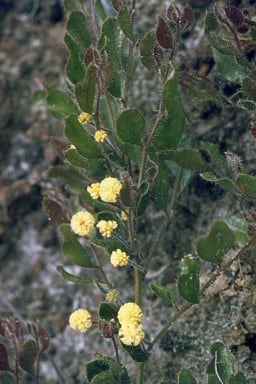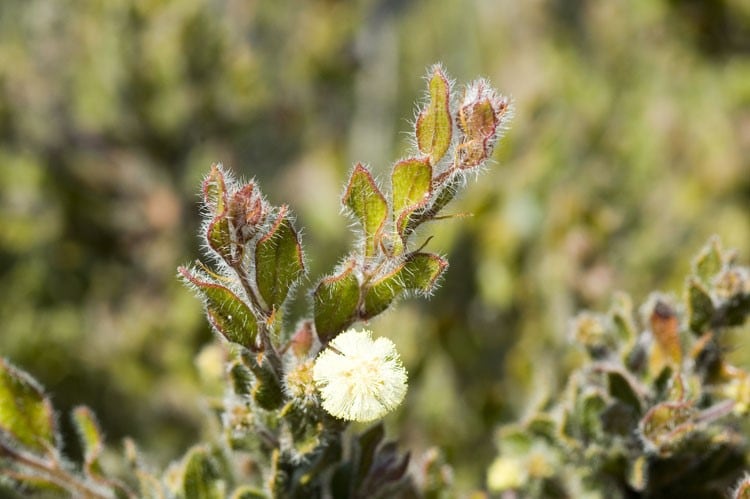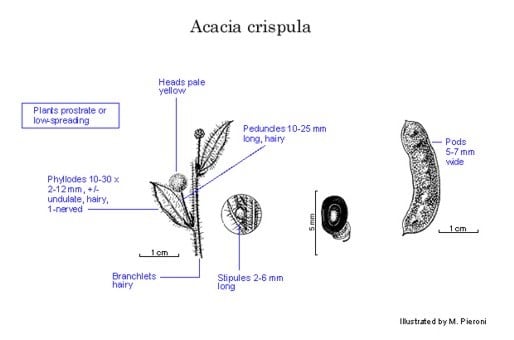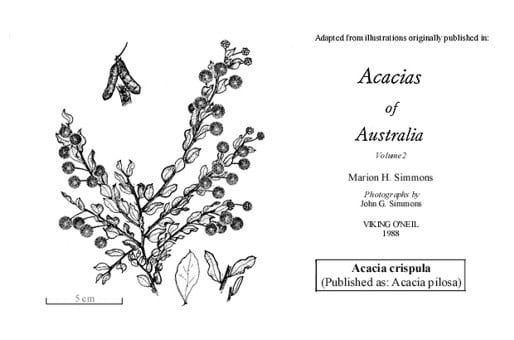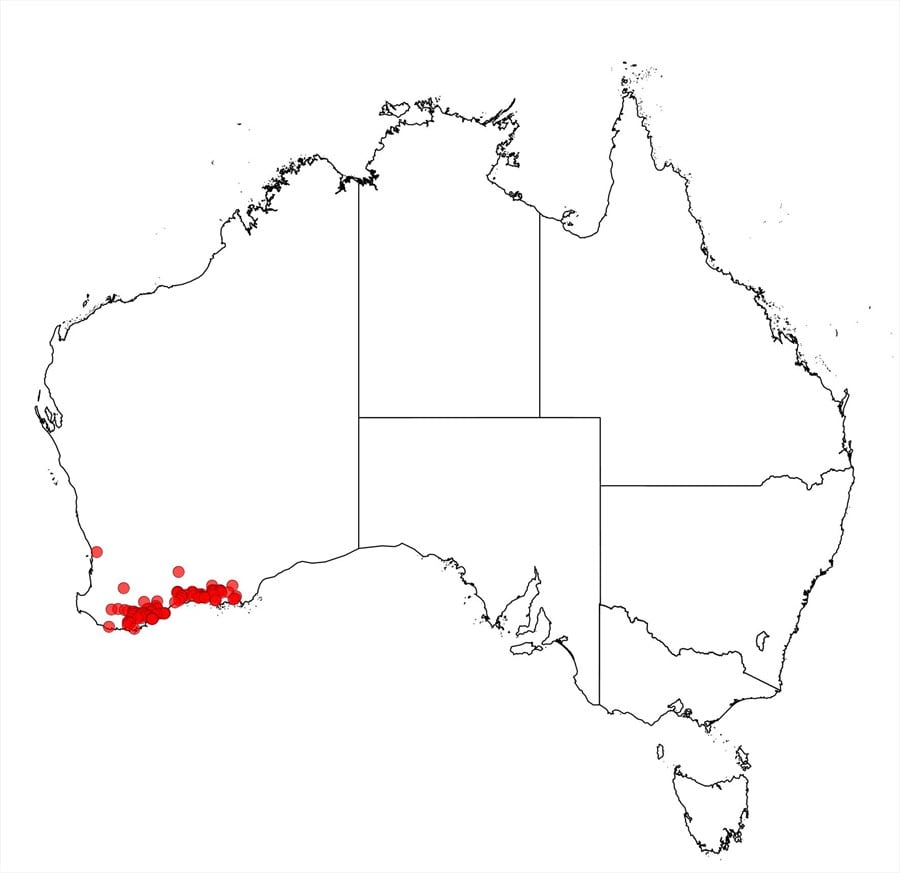Acacia crispula Benth.
WATTLE
Acacias of Australia
Family
Fabaceae
Distribution
Gordon R. near Cranbrook E to near Cape Arid, south-western W.A., with one collection (R.D.Royce 9805, PERTH) from near Wagin, c. 140 km N of Cranbrook.
Description
Multistemmed prostrate or low-spreading shrub to 0.3 m high. Branchlets hirsutellous or hirsutellous and pilose intermixed. Stipules persistent, ±linear, 2–6 mm long. Phyllodes oblique, elliptic or narrowly elliptic to ±lanceolate, infrequently obovate or ±narrowly oblong, 1–3 cm long, 2–12 mm wide, ±undulate, acute to obtuse and apiculate-mucronulate, pilose or hirsutellous or a mixture of both, 1-nerved per face; lateral nerves obscure. Inflorescences simple or in racemes 0.5–3 mm long, 1 or 2 per axil; peduncles usually 1–2.5 cm long, with indumentum as on branchlets; heads globular, 4–4.5 mm diam., 10–20-flowered, pale yellow. Flowers 5-merous; sepals 1/2–3/4-united, with tube 5-nerved and lobes acute; petals pilose to hirsutellous, 1-nerved. Pods narrowly oblong, straight or arcuate, 1–4 cm long, 5–7 mm wide, crustaceous to coriaceous, glabrous or pubescent as branchlets. Seeds transverse, oblong-elliptic, 3–3.5 mm long, shiny, black, arillate.
Habitat
Grows in sand, sandy or gravelly clay, sandy loam and loam, mostly in mallee shrubland but also in heath, low scrub and open wandoo flats.
Specimens
W.A.: base of Mondurup Peak, Stirling Ra., R.J.Cumming 997 (PERTH, TLF); c. 10 km ESE of Howick Hill, E.N.S.Jackson 1237 (PERTH); Mt Melville near Cape Riche, B.R.Maslin 1057 (AD, BRI, K, MEL, NSW, PERTH); near Cape Arid, 1875 [G.] Maxwell s.n. (PERTH ex MEL); 8 km N of Ravensthorpe in Ravensthorpe Ra., P.G.Wilson 7105 (CANB, PERTH).
Notes
A.S.George 3148 (PERTH), from Bluff Knoll in the Stirling Ra., has shorter than normal phyllodes (4–6 mm long). It also has very narrow phyllodes like the type of A. crispula which has short peduncles (6–7 mm long). This suggests that perhaps the type was collected from a peak in the Stirling Ra. The Maxwell specimen from near Cape Arid (at the eastern limit of the range) has unusual phyllodes which resemble some forms of A. crassistipula; they are lanceolate, elongate (l:w = 6) and have narrowed to recurved apices; in A. crispula the apices are commonly straight. Acacia crassistipula is readily distinguished from most other Acacia species by its foliaceous stipules.
Similar to A. shuttleworthii which has generally shorter stipules, phyllodes and peduncles. Also with affinity to A. crassistipula and A. gregorii.
Phyllodes are variable in size: the type of A. crispula (phyllodes 2–2.5 mm wide) and of A. pilosa (phyllodes 6–12 mm wide) encompass the variational limits of phyllode width for the species.
FOA Reference
Data derived from Flora of Australia Volumes 11A (2001), 11B (2001) and 12 (1998), products of ABRS, ©Commonwealth of Australia
Author
B.R.Maslin
This identification key and fact sheets are available as a mobile application:
URL: https://apps.lucidcentral.org/wattle/
© Copyright 2018. All rights reserved.
